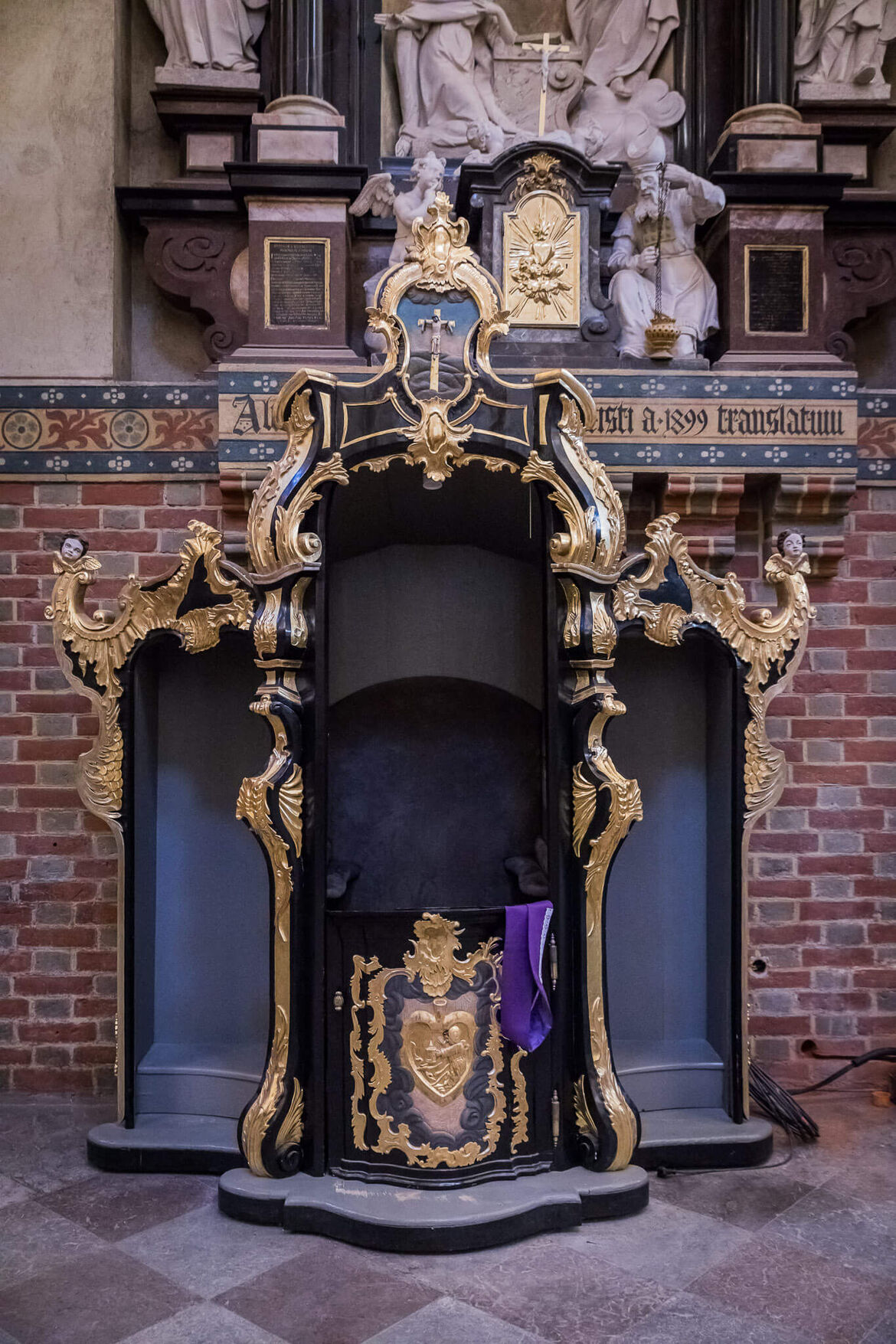In the southern transept-arm, above the passage connecting the temple with the monastery, there are side organs from the Baroque era hidden behind an incredible, monumental front – one of the most beautiful fronts in northern Europe.
The woodcarving was made by an unknown artist (some sources mention Mateusz Scholler from Gniew) in 1677-1680 for the organs built in 1679 by Jan Jerzy Wolff, an organ builder from Gdańsk. The multi-storey work is decorated with an unusual richness of sculptures and reliefs: pipes, framed on each side with chambranles, melted into an impressive decoration composed of plant ornaments (acanthus leaves, garlands), angels and mascarons. Extremely expressive and dynamic sculptures complement the whole structure. The most impressive sculpture is the ascending Christ crowning the organ front – half naked, dancing with raised arms, almost hovering over clouds, as if he was getting off the ground and detaching himself from earthly reality. Such a form of the Ascension motif is connected with the Old Testament image of King David dancing and jumping in front of the Ark of the Covenant; it expresses joy resulting from his union with God the Father.
The organs are equipped with a mechanical tracker, 42 voices, 3 keyboards and a pedal. In the middle of the 19th century, a new neo-Gothic instrument was built in the Basilica on the newly built gallery above the main entrance. It has been used since then, as the Baroque instrument was not strong enough to fill the whole temple with sound.
The side organs were reconstructed in 2003 by Józef and Zdzisław Mollin from Odry. However, the front was still in poor condition – there was a lot of structural damage, and the wood was becoming more and more degraded, in some places it was decaying. Gold and silver plating, as well as polychromies were damaged, chipped and with numerous defects. The work that required immediate intervention is now undergoing a major restoration as part of the project “Cathedral Basilica in Pelplin – renovation and opening of a new exhibition area”.
The completed works were accepted through a protocol by the Provincial Office for the Protection of Monuments in November 2019.










































